|
Books Should Be Free Loyal Books Free Public Domain Audiobooks & eBook Downloads |
|
|
Books Should Be Free Loyal Books Free Public Domain Audiobooks & eBook Downloads |
|
Science Fiction |
|---|
Book type:
Sort by:
View by:
|
By: Sir Arthur Conan Doyle (1859-1930) | |
|---|---|
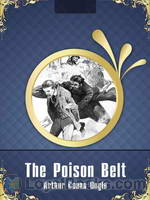 The Poison Belt
The Poison Belt
Three years after the events that took place in The Lost World, Professor Challenger urgently summons his fellow explorers (Professor Summerlee, Lord John Roxton, and reporter E.D. Malone) to a meeting. Oddly, he requires each to bring an oxygen cylinder with him. What he soon informs them is that from astronomical data and just-received telegraphs of strange accidents on the other side of the world, he has deduced that the Earth is starting to move through a region of space containing something poisonous to humankind... | |
By: Jules Verne (1828-1905) | |
|---|---|
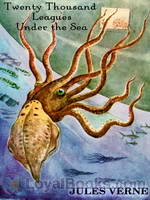 Twenty Thousand Leagues Under the Sea
Twenty Thousand Leagues Under the Sea
An early science fiction novel written by the second most translated author, French writer Jules Verne, the classic tale depicts an incredible sea expedition on board a state-of-the-art submarine. First published in 1870 and a part of the Voyages Extraordinaires series, the novel is regarded as one of the most thrilling adventure stories and one of Verne’s greatest pieces of work. Immersed in themes of exploration, avant-garde technology, and man’s insatiable desire for knowledge and scientific progression, Twenty Thousand Leagues Under the Sea has been an influence for many writers as well as an inspiration for numerous film adaptations... | |
 From the Earth to the Moon
From the Earth to the Moon
One of the earliest examples of literature written in the science fiction genre, From the Earth to the Moon is a part of the Voyages Extraordinaires series by French novelist Jules Verne. Written more than a century before the Apollo mission, Verne’s classic is somewhat a prophetic novel of man’s travel to the moon with its thorough and descriptive detail. A remarkable blend of action, humor, science, and audacious schemes, the timeless classic is sure to fascinate with its unique vision of lunar exploration... | |
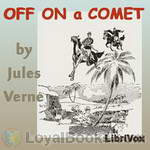 Off on a Comet
Off on a Comet
The story starts with a comet that touches the Earth in its flight and collects a few small chunks of it. Some forty people of various nations and ages are condemned to a two-year-long journey on the comet. They form a mini-society and cope with the hostile environment of the comet (mostly the cold). The size of the 'comet' is about 2300 kilometers in diameter - far larger than any comet or asteroid that actually exists. | |
 Topsy-Turvy
Topsy-Turvy
Topsy Turvy is a translation of Sans dessus dessous (1889) . This anonymous translation was first published by J. G. Ogilvie (New York, 1890). We meet our old friends Barbicane and J.T. Maston from “Earth to the Moon” who now give us their own approach to the topic of “global warming”. Although they are searching for coal and not oil, readers will find that the auction of the Arctic energy reserves has a definite 21st century ring. | |
By: H. G. Wells (1866-1946) | |
|---|---|
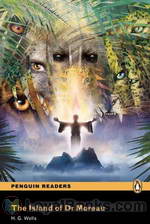 The Island of Dr. Moreau
The Island of Dr. Moreau
One of the first instances of science fiction, Wells’ classic tale published in 1986 examines various controversial philosophical issues active at the time of its publication, most notable being the implications of vivisection and degeneration. Narrated by its everyman protagonist Edward Prendick, the novel follows the events of his stay at a mysterious island, home to ghastly secrets, horrors, and incomprehensible experiences. Furthermore, the novel features innovative themes which have become iconic in the modern science fiction genre, including moral and ethical responsibility, evolution, and man’s interference with the course of nature... | |
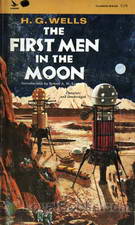 The First Men in the Moon
The First Men in the Moon
Written nearly seven decades before Neil Armstrong's historic “Giant leap for Mankind” this book by one of the most influential sci-fi writers in English is an interesting read. The First Men in the Moon by Herbert George Wells, the English author who is today called the Father of Science Fiction, describes a strange and fantastic voyage. Businessman and budding playwright, John Bedford takes a sabbatical from his work and decides to write a play. He moves to a lonely cottage in Kent where he hopes to come up with a theatrical masterpiece... | |
 The Food of the Gods and How it Came to Earth
The Food of the Gods and How it Came to Earth
Two stuffy English scientists, always looking to further their scientific knowledge, create a substance called Herakleophorbia, which in its fourth incarnation – known as Herakleophorbia IV – has the special ability of making things increase greatly in size. As the scientists begin experimentation on some chicks, the substance is misused by some “country folk” who don’t take it seriously and soon Herakleophorbia IV is running rampant throughout England and then across the globe, creating giant plants and animals that wreak havoc on the land and then the people... | |
 A Story of the Stone Age
A Story of the Stone Age
This story is of a time beyond the memory of man, before the beginning of history. . . | |
By: Jack London | |
|---|---|
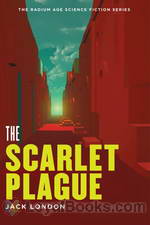 The Scarlet Plague
The Scarlet Plague
Known mainly for his tales of adventure, this work of science fiction by Jack London is set in a post-apocalyptic future. It’s 2072, sixty years after the scarlet plague has depopulated the planet. James Howard Smith is one of the few survivors of the pre-plague era left alive in the San Francisco area, and as he realizes his time grows short, he tries to impart the value of knowledge and wisdom to his grandsons. Through his narrative, we learn how the plague spread throughout the world and of the struggles of the handful of survivors it left in its wake. The Scarlet Plague was originally published in London Magazine in 1912. | |
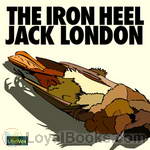 The Iron Heel
The Iron Heel
A dystopian novel about the terrible oppressions of an American oligarchy at the beginning of the Twentieth Century, and the struggles of a socialist revolutionary movement. (Introduction by Matt Soar) | |
 Before Adam
Before Adam
"Before Adam is a mixture of sound science and sci-fi speculation. It is based around Darwin's theory of evolution and the idea of racial memory. The main character lives in the current world but has dreams and nightmares that he relives the pre-stone age life of one of his proto-human ancestors. Those who are scientifically inclined may enjoy this novel more than fans of "standard" science fiction such as Edgar Rice Burroughs. | |
By: Edgar Rice Burroughs (1875-1950) | |
|---|---|
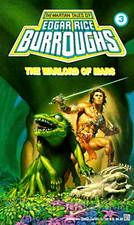 Warlord of Mars
Warlord of Mars
Warlord of Mars by Edgar Rice Burroughs was first published in 1913. It was the third book in an eleven part series known as the Barsoom Chronicles which relate to a sequence of exciting adventure tales set on the fictional planet of Barsoom. In the Barsoom series, Mars, assumed to be older than Earth, is a dying planet. “Barsoom” is the native word for Mars in the Martian language. The stories first appeared in serialized form in various magazines like All-Story, Argosy, Amazing Stories and The Blue Book... | |
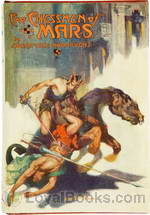 The Chessmen of Mars
The Chessmen of Mars
If you're a sci-fi fan, then you've probably heard of Edgar Rice Burroughs' famous Barsoom series of science fiction fantasy novels. Set in the “dying planet” Mars, the ten books in the series portray an Earthman, John Carter and his astral journey to the Red Planet, his marriage with a native princess and his descendants. The Chessmen of Mars is the fifth book in the Barsoom set, written in 1921 and published in serial form in Argosy magazine over the period of a year. Here, John Carter's daughter Tara meets Prince Gahan of the Gathol kingdom, but takes an instant dislike to the young and fashionable man, feeling that he is just a shallow youth... | |
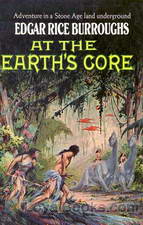 At the Earth's Core
At the Earth's Core
This is the first book in the Pellucidar series. Pellucidar is a fictional Hollow Earth milieu invented by Edgar Rice Burroughs for a series of action adventure stories. The stories initially involve the adventures of mining heir David Innes and his inventor friend Abner Perry after they use an “iron mole” to burrow 500 miles into the earth’s crust. (adapted from Wikipedia) | |
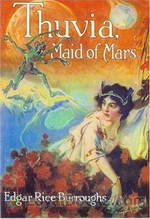 Thuvia, Maid of Mars
Thuvia, Maid of Mars
Published in 1920, Thuvia, Maid of Mars is the fourth book in the Barsoom series and concentrates on Carthoris, the son of infamous John Carter, and Thuvia, the princess of Ptarth, as they find themselves entangled in a complex web of love and strict traditions of Barsoom. A typical Burroughs piece, the installment contains all the required elements of an effective pulp fiction, including a hero, a damsel in distress, unforeseen complications, and a generous supply of action. Welcoming a new... | |
 The People that Time Forgot
The People that Time Forgot
The People that Time Forgot is a science fiction novel, the second of Edgar Rice Burroughs’ “Caspak” trilogy. The first novel ended with the hero writing a manuscript of his adventures and casting it out to sea in his thermos bottle. The second novel begins with the finding of the manuscript and the organization of a rescue expedition. | |
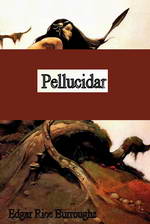 Pellucidar
Pellucidar
Pellucidar is a fictional “Hollow Earth” milieu invented by Edgar Rice Burroughs for a series of action adventure stories. The stories initially involve the adventures of mining heir David Innes and his inventor friend Abner Perry after they use an “iron mole” to burrow 500 miles into the earth’s crust. This is the second book in the series. | |
By: Alan Edward Nourse (1928-1992) | |
|---|---|
 Five Stories by Alan Nourse
Five Stories by Alan Nourse
These Five Stories were written by Alan Edward Nourse, an American science fiction (SF) author and physician. He wrote both juvenile and adult science fiction, as well as nonfiction works about medicine and science. His SF works generally focused on medicine and/or psionics. Psionics refers to the practice, study, or psychic ability of using the mind to induce paranormal phenomena. Examples of this include telepathy, telekinesis, and other workings of the outside world through the psyche. | |
By: Mary Wollstonecraft Shelley | |
|---|---|
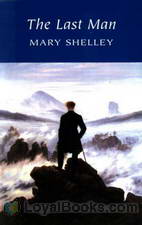 The Last Man
The Last Man
The Last Man is an early post-apocalyptic science fiction novel by Mary Shelley, which was first published in 1826. The book tells of a future world that has been ravaged by a plague. The plague gradually kills off all people. Lionel Verney, central character, son of a nobleman who gambled himself into poverty, finds himself immune after being attacked by an infected “negro,” and copes with a civilization that is gradually dying out around him. | |
By: Andre Norton (1912-2005) | |
|---|---|
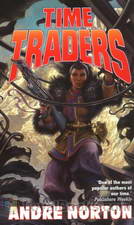 The Time Traders
The Time Traders
If it is possible to conquer space, then perhaps it is also possible to conquer time. At least that was the theory American scientists were exploring in an effort to explain the new sources of knowledge the Russians possessed. Perhaps Russian scientists had discovered how to transport themselves back in time in order to learn long-forgotten secrets of the past. That was why young Ross Murdock, above average in intelligence but a belligerently independent nonconformist, found himself on a “hush-hush” government project at a secret base in the Arctic... | |
 Key Out of Time
Key Out of Time
This is Book 4 in the Time Traders Series, In this book Ross Murdock and Arthur Ashe continue their adventures in Time and Space on the World of Hawaika. Hawaiian and Polynesian settlers help Ross and Ashe discover the way the world has changed from the data tape to present time. Helped by a girl (Karara) and her two trained dolphins (Tino-rau and Taua) | |
 The Defiant Agents
The Defiant Agents
Travis Fox and a band of fellow Apache AmerIndians have their racial memories and survival abilities enhanced by the Redax machine and are sent to the planet Topaz, one of the few worlds of the ancient star empire that the US has voyage tapes to. But the Reds have “snooped” the tapes and get there first, and have a nasty surprise waiting for any ship that does not have the proper identification. Travis and some of his fellow Apaches survive the ensuing crash landing…but can they defeat the Reds and win Topaz for themselves? This work is a sequel to both The Time Traders and Galactic Derelict... | |
 The People of the Crater
The People of the Crater
An air force pilot adrift in peacetime is recruited to join an Antarctic expedition. When a strange mist downs his plane he discovers an ancient alien civilization which has prophesized his arrival. Now he and his faithful pet Ana must descend to the depths of the crater and face the Black Ones in order to rescue the fair Thrala, daughter of the Ancient Ones. – Andre Norton (Alice Mary Norton) was a popular author of science fiction and fantasy who began publishing stories in the early 1930s. “The People of the Crater” was first published in volume 1 number 1 of Fantasy Book in 1947. | |
By: Marion Zimmer Bradley (1930-1999) | |
|---|---|
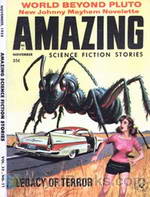 The Planet Savers
The Planet Savers
The Terran colony on the planet Darkover faces imminent destruction by a plague of the deadly Trailmen's Fever. The only hope is to develop a serum in time, but this requires the cooperation of the elusive native Trailmen, the brilliant parasitologist Dr. Jay Allison, and his split personality. (Introduction by Mark Nelson) | |
By: H. Beam Piper (1904-1964) | |
|---|---|
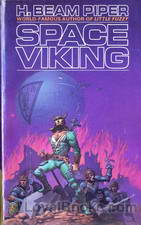 Space Viking
Space Viking
A galactic war has left the Terran Federation in ruins. Formerly civilized planets have decivilized into barbarism. Space Vikings roam the wreckage, plundering and killing for gain. Lord Lucas Trask of Traskon was no admirer of the Space Vikings, but when murder takes his wife on his wedding day, Trask trades everything he has for his own Space Viking ship and sets out on a galaxy-wide quest for revenge. | |
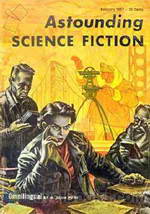 Omnilingual
Omnilingual
An expedition to Mars discovers the remains of an advanced civilization, which died out many thousands of years ago. They recovered books and documents left behind, and are puzzled by their contents. Would the team find their “Rosetta Stone” that would allow them to unlock the Martian language, and learn the secrets of this long-dead race? | |
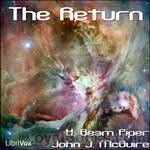 The Return
The Return
Two-hundred years after a global nuclear war, two explorers from a research outpost, that largely survived the cataclysm, discover a settlement of humans who have managed to maintain their civilisation despite ferocious cannibal neighbours, the Scowrers. However, the explorers must turn detective in order to understand the mystery of their hosts philosophy and religion. (Description by Reynard) | |
 Uller Uprising
Uller Uprising
Uller Uprising is the story of a confrontation between a human overlord and alien servants, with an ironic twist at the end. Like most of Piper’s best work, Uller Uprising is modeled after an actual event in human history; in this case the Sepoy Mutiny (a Bengal uprising in British-held India brought about when rumors were spread to native soldiers that cartridges being issued by the British were coated with animal fat. The rebellion quickly spread throughout India and led to the massacre of the British Colony at Cawnpore.). Piper’s novel is not a mere retelling of the Indian Mutiny, but rather an analysis of an historical event applied to a similar situation in the far future. | |
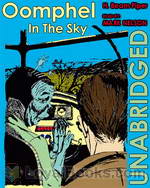 Oomphel in the Sky
Oomphel in the Sky
Natives of the distant planet of Kwannon believe that their world is about to end, and in preparing for the apocalypse, may be unnecessarily bringing about their own demise. The planetary government can’t overcome its own bureaucracy to help them, and the military is overwhelmed. Can a single newsman change the course of a whole people, and save their world? | |
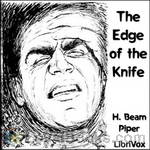 The Edge of the Knife
The Edge of the Knife
The Terro-Human Future History is Piper’s detailed account of the next 6000 years of human history. 1942, the year the first fission reactor was constructed, is defined as the year 1 A.E. (Atomic Era). In 1973, a nuclear war devastates the planet, eventually laying the groundwork for the emergence of a Terran Federation, once humanity goes into space and develops antigravity technology.The story “The Edge of the Knife” (collected in Empire) occurs slightly before the war, and involves a man who sees flashes of the future. It links many key elements of Piper’s series. | |
 Little Fuzzy
Little Fuzzy
Jack Holloway, a prospector on the planet Zarathustra discovers small furry creatures. These creatures are obviously intelligent, but are they animals or are they sapient? If they are sapient the planet will be declared a protected zone and the company that is developing the planet commercially will lose their exclusive rights to the resources… | |